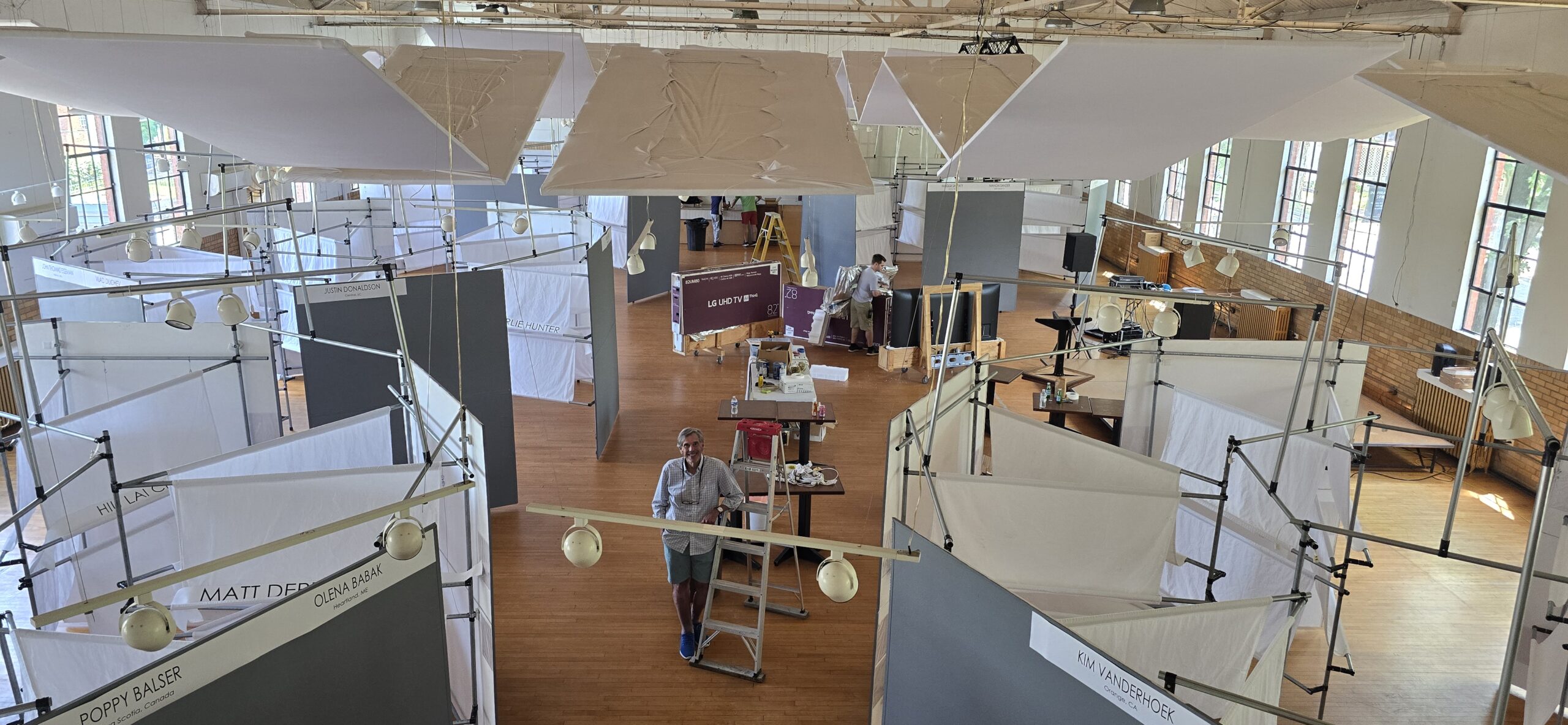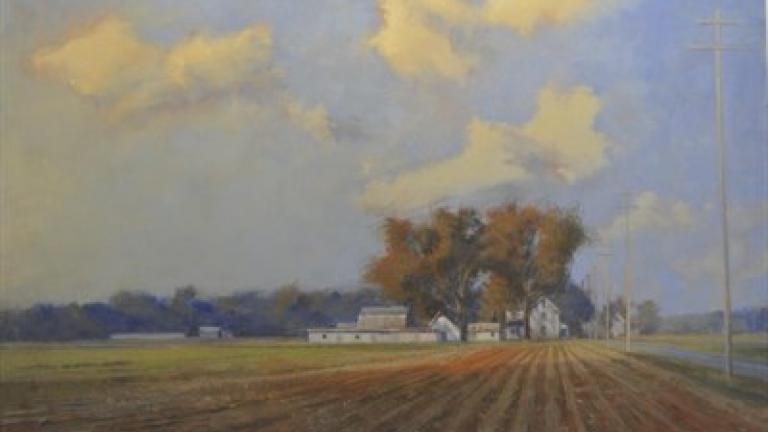Artist Jill Basham unveils a new chapter in her creative journey with “Another Side of Jill Basham,” exploring new mediums, techniques, and subject matter in a bold artistic evolution.
Renowned for her expansive impressionistic landscapes and signature low horizon lines, artist Jill Basham invites viewers to experience different directions in her upcoming exhibition, “Another Side of Jill Basham,” which opens November 1 at The Trippe Gallery.
This show reveals the artist’s exploration into a variety of techniques, subject matter, as well as medium, allowing her to tap into an emotional depth and range. While Basham is best known for her sweeping skies and expansive vistas, this exhibition offers a glimpse into a broader creative vision. The works on display range from her signature oil landscapes to more abstract realism, as well as intimate still lifes, dynamic city scenes, and rugged cliff sides and waterfalls. Some pieces feature gouache, a departure from her usual medium of oil.
While Jill has built her career on impressionistic brushwork, several pieces in “Another Side of Jill Basham” take a more abstracted approach, reflecting the artist’s desire to push beyond her established comfort zone. “Exploration is necessary for growth as an artist,” Basham explains. “With exploration comes new ideas, and these ideas can build on one another, leading to new ways of expressing emotion and perspective.” This sentiment is echoed by Trippe Gallery owner, Nanny Trippe, who shares, “I have known Jill a long time and watched her growth as a significant contemporary artist. I approached her with an idea of an exhibition tapping into another side of her creativity, giving her the freedom to paint from perhaps a different vision/version of inspiration. I am really excited to share these works!”
In the first of many salon talks, Nanny talks to Jill about this unique shift and the unique freedom that the show allowed her to experience.
The exhibition runs through November 30, with an opening reception with the artist on Friday, November 1, from 5 to 7 p.m. The Trippe Gallery is located at 23 N Harrison Street. For more information, please call 410-310-8727.






 Another fascinating aspect of the building’s history involves its role as a venue for African American basketball teams during a time when such opportunities were limited. “Traditionally, African American basketball teams had limited places to play, and the armory was one of those places,” said Kilmon. “We’re unearthing this history and discovering how the armory provided space. It was free; everyone could play here. Everyone was welcome.”
Another fascinating aspect of the building’s history involves its role as a venue for African American basketball teams during a time when such opportunities were limited. “Traditionally, African American basketball teams had limited places to play, and the armory was one of those places,” said Kilmon. “We’re unearthing this history and discovering how the armory provided space. It was free; everyone could play here. Everyone was welcome.”







